Flavor your food with fresh-cut vegetables in this robust Creole Seasoning Blend Recipe. Making this homemade blend is more economical than the brands in grocery stores and a time saver for easy meal prep. Try it in Cajun dishes, Creole cooking, and many of your favorite recipes.
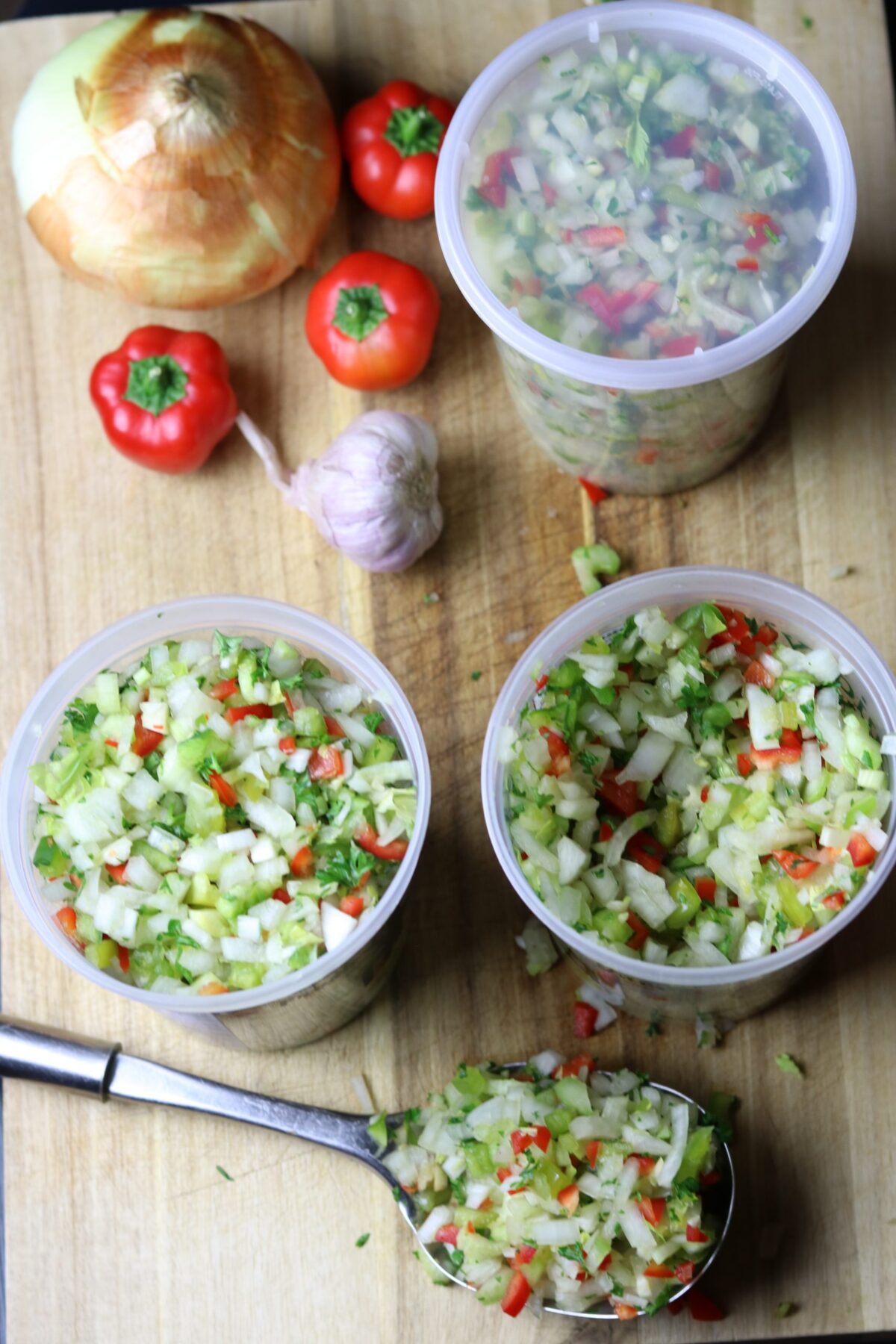
I'm an Amazon Associate. The Louisiana Woman Blog contains affiliate links with Amazon, and I will earn a commission if you purchase through those links. Thank you!
Jump to:
For recipes for this Creole Seasoning Blend, here's Wild Goose Gumbo: A Cajun, Field To Table Recipe. Cajuns have passed down a tradition of making gumbo with wild goose or duck. Another good use for this seasoning is in Va Vite Cajun Red Beans And Rice Recipe, Quick And Easy. The blend's chopped fresh veggies help save even more time in the kitchen.
What Is Creole Seasoning Blend?
Well, it isn't the commercial brands of dried Creole spice mix or Cajun seasoning blends that are well-populated on grocers' shelves. Instead, this is a perfect blend of fresh-cut vegetables and different herbs. It gives food bold flavors as a base seasoning in cooking, and of course, it's better 'cause it's fresher!
The beauty of the Creole seasoning blends is that they're pre-cut and always ready to use. It's perfect for making a roux for gumbo and stews. You may have discovered them in the grocery store's produce or frozen food section.
Since these products are so convenient, I've made my homemade seasoning blend. It costs about half the price of store-bought brands, and I can save even more when using home-grown vegetables. It also lasts longer when stored in the freezer.
Also, there's less waste when I chop and store produce while it's at its freshest. This practice keeps the produce from spoiling in the refrigerator drawer before I cook. Know what I mean?
The Difference Between Cajun And Creole Cuisines
This easy recipe includes the simple Cajun trinity used in Cajun food prep, plus a few more flavors. It may be why it's called Creole instead of Cajun. Do you know there's a difference between the two? Some distinguish them as Cajun from the country and Creole from the city.
You see, Cajun cuisine originated in Acadiana or central southwest Louisiana. These country people learned to cook with what the land offered. My Godmother says Cajun cooking isn't like Creole dishes because certain ingredients haven't always been available to the Cajuns. For instance, foods like fresh tomatoes and dried beans.
Creole cuisine is a little more complex. It originated in New Orleans and was influenced by the French, Spanish, African, and Caribbean people. With the city's access to shipping ports, suppliers shipped foods from around the world to meet the demands of the diverse cultures' way of cooking. This is Creole cuisine.
The name Creole in this Seasoning Blend may come from Creole foods requiring more complex or diverse flavors. Besides their differences, both styles borrow and complement each other's culinary methods beautifully. They are what makes Louisiana so unique and exceptional.
Ingredients For This Fresh Creole Seasoning Recipe
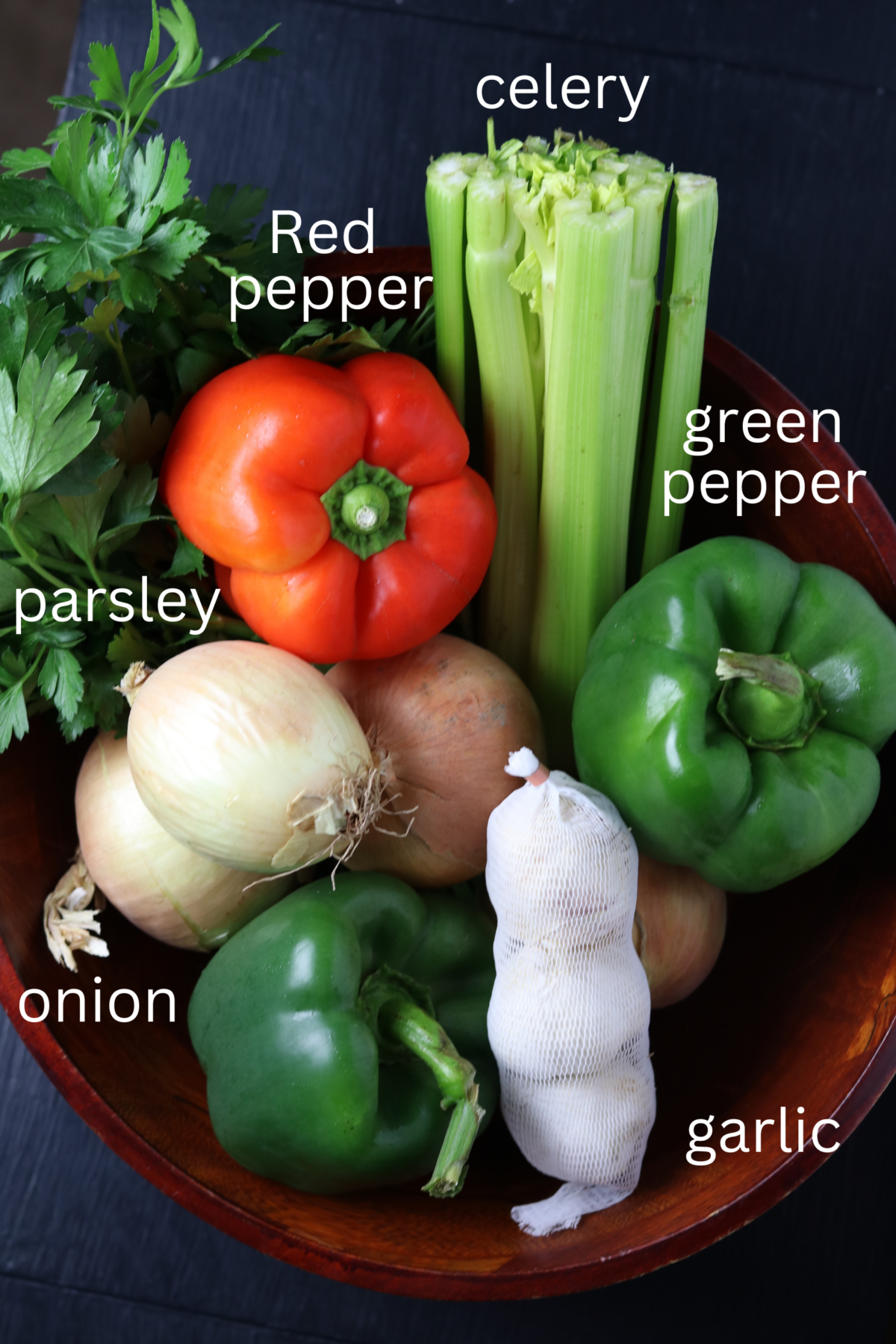
- Chopped onion - white or yellow will do.
- Chopped green bell pepper - the second member of the Cajun trinity.
- Chopped celery - the third member of the tri.
- Chopped red bell pepper - for sweet flavor and bright color.
- Fresh parsley - chop the leaves only; the stems are slightly bitter and tougher.
- Garlic - fresh is always best, and getting tiny bits of garlic by pushing a clove through a garlic press ensures even distribution.
The specific amounts for ingredients and nutritional information are in the recipe card below.
Instructions For This Recipe
A lot of savory cooking begins with sautéing onion, celery, and peppers, a.k.a. the Cajun holy trinity. It's pretty tasty and has an added bonus of a tantalizing aroma as it cooks. You may have been cooking with it for years and didn't know it by its Cajun name. Now you do!
Sometimes, the thought of having to chop vegetables keeps me from cooking. And I don't know about you, but my eyes always water when cutting up an onion. And I don't like crying for no good reason!
My solution is to wear onion goggles that protect my eyes. This helps when chopping large batches for this robust blend, including red and green bell peppers, celery, garlic, and parsley. I chop them into small pieces and stir them in a big bowl. They make a beautiful pile of fresh flavor and aroma.
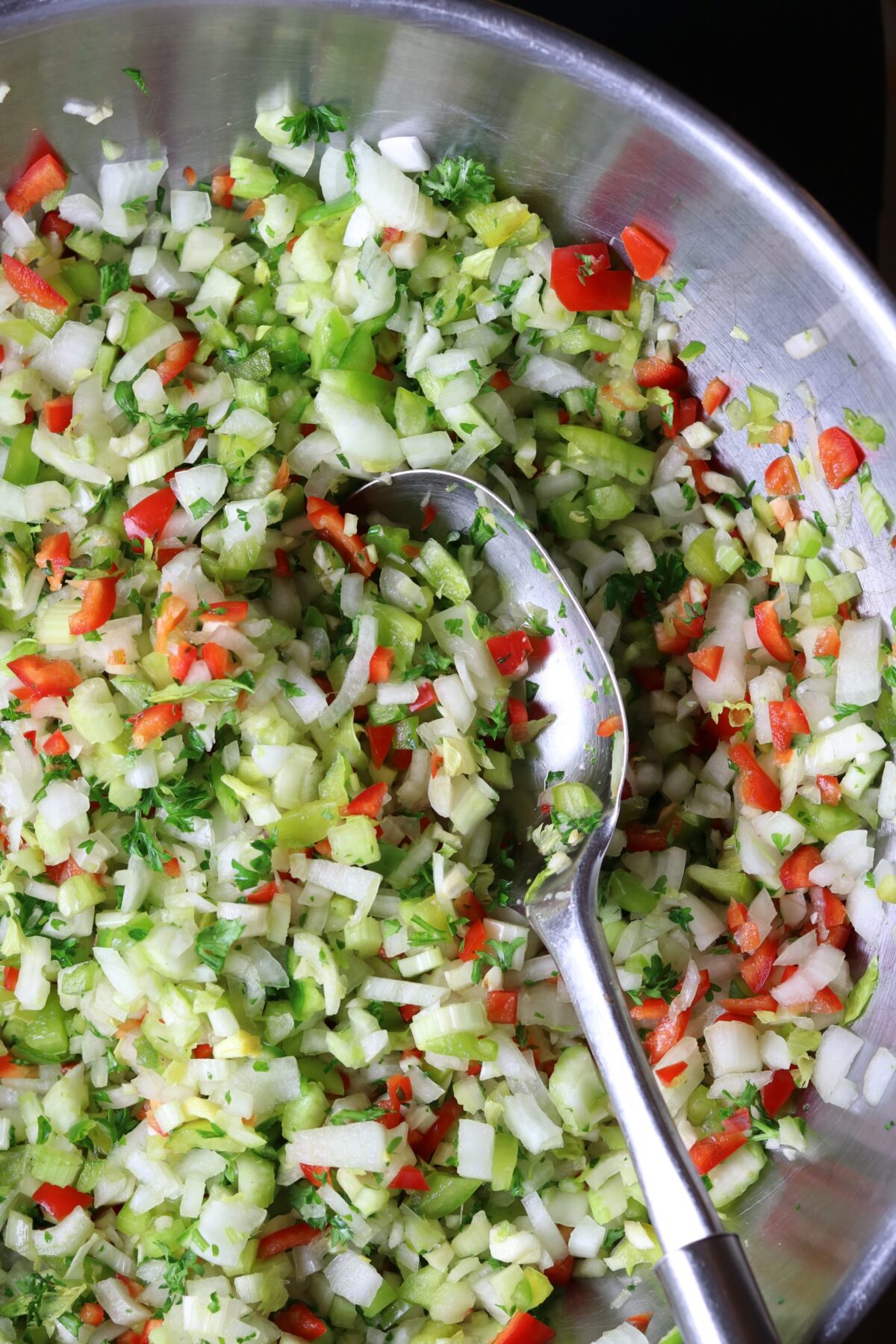
"What about a food processor?" you may ask. That's an option, but it tends to pulverize the vegetables too fine and make them uneven and watery. Hand-chopping gives a more unified size, which I prefer. My younger sister, Virgina, says the food processor makes the food taste different. I agree!
Top Tip
Wear onion goggles that protect your eyes when chopping large batches of onions. You'll have tear-free chopping!
How To Store The Blend
After the chopping, I divide the combination into portions and store them for up to a week in the refrigerator or months in the freezer. It conveniently saves time and money and keeps my eyes from watering like a whale!
I find that this vacuum sealer machine is the best option for storing in the freezer. It removes the air and seals the bags, saving them from freezer burn. These flattened bags stack nicely in my freezer, so I can store them conveniently.
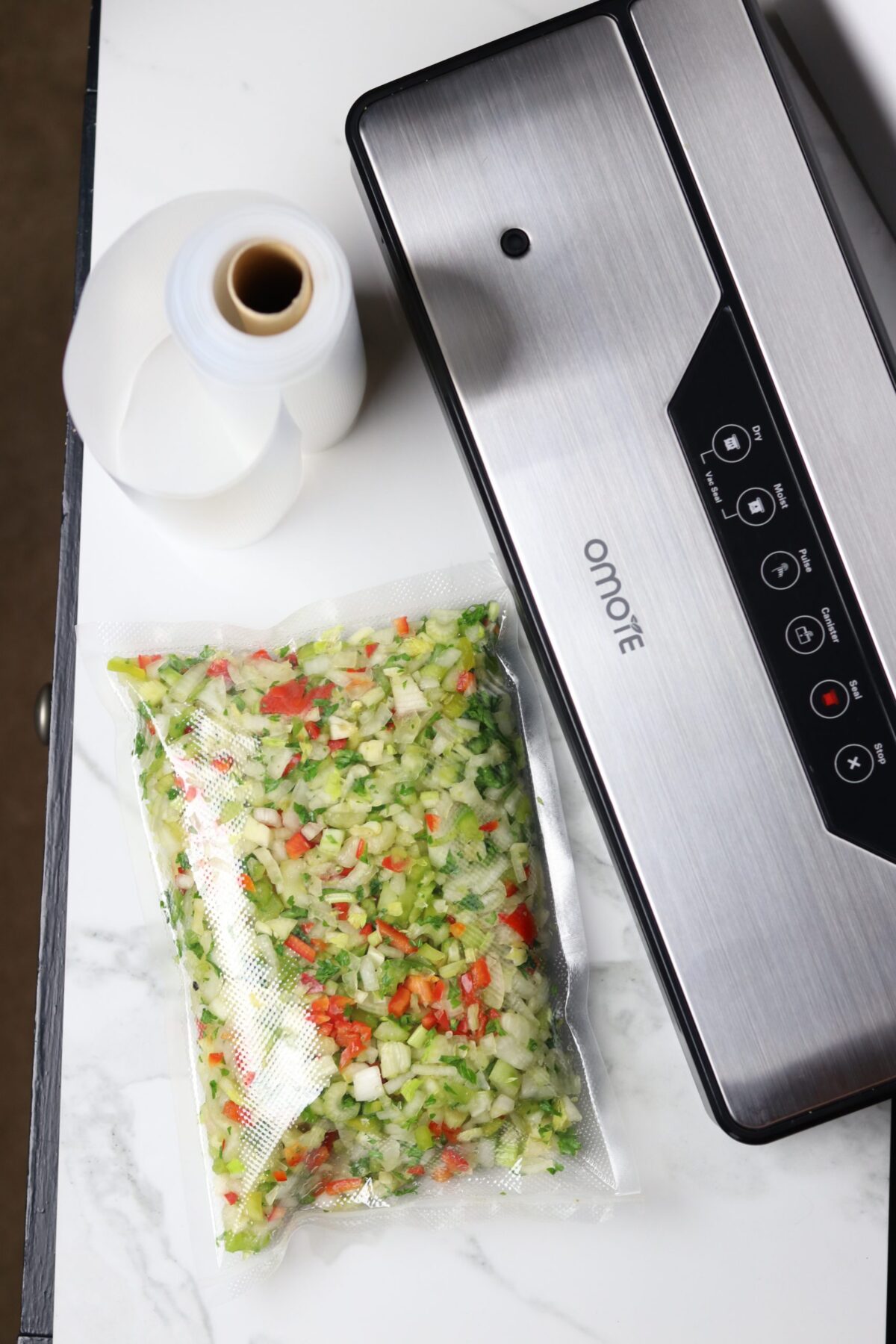
Now, there's less hesitation when cooking with chopped vegetables. I just go into the kitchen, grab a bag, and cook.
Recipes For Dry Homemade Spice Blends
If you came here looking for a dry seasoning for your spice cabinet, try my Pink Cajun Seasoning Blend. It's a delicious seasoning of spices, not just for Cajun recipes! I use pink salt here, but regular kosher, table, or sea salt can be substituted.
Related Recipes
Here are some delicious suggestions for cooking with the Creole Seasoning Blend Recipe.
Recipe

Creole Seasoning Blend Recipe With Fresh Vegetables
A large batch of fresh-cut vegetables prepared ahead of time to cook with in your favorite savory dishes.
- Total Time: 15 minutes
- Yield: 10.5-cups 1x
Ingredients
- 4.5 cups chopped onions or 3 large onions
- 2.5 - 3 cups chopped celery or 1 bunch of celery
- 2 cups chopped green bell peppers or 2 large green bell peppers
- 1 cup chopped red bell pepper or 1 large red bell pepper
- .75 cups chopped parsley leaves or ½ bunch parsley
- 3.5 - 4 tablespoons pressed garlic or 1 bulb of garlic
Instructions
- Mix all together in a large bowl.
- Divide into 3.5-cup servings and place into airtight plastic containers or bags.
- Store in the refrigerator for up to a week or freeze for up to 2 months.
Notes
- Use 3.5 cups of the seasoning blend for 1 Chicken Gumbo recipe.
- Defrost the blend if frozen before cooking.
- Some seasoning blends call for green onion; this can be included here or added at the finish of a cooked dish for garnish and extra onion flavor.
- Using a vacuum sealer machine to store individual 3.5-cup servings is convenient for cooking and storing.
- Prep Time: 15 minutes
- Category: vegetables
- Cuisine: Cajun/Creole
You know I love hearing from you. Be sure to sign up for my emails to keep in touch. If you have any questions or comments, leave them in the reply box below.
Have a nice day!
"Always help people increase their own self-esteem. Develop your skill in making other people feel important."
Donald Laird

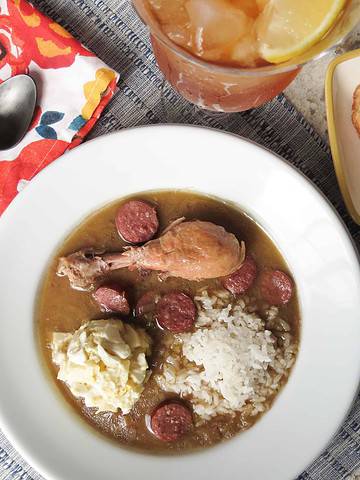
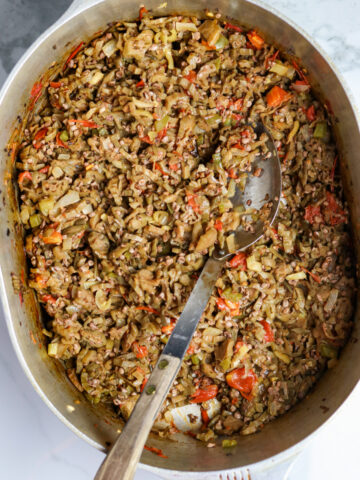
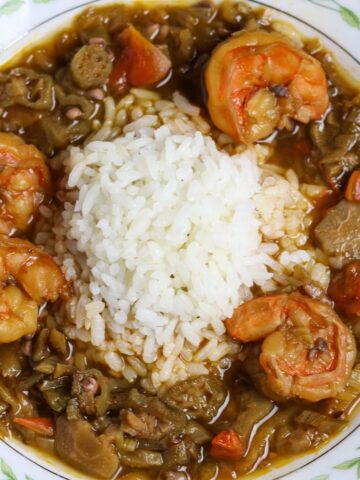
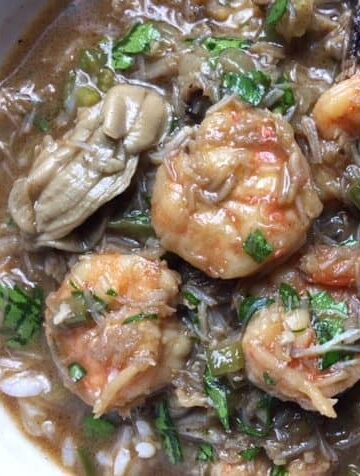
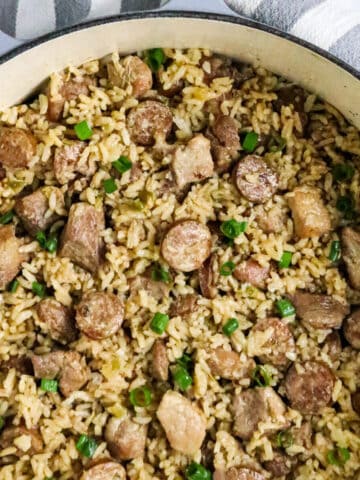
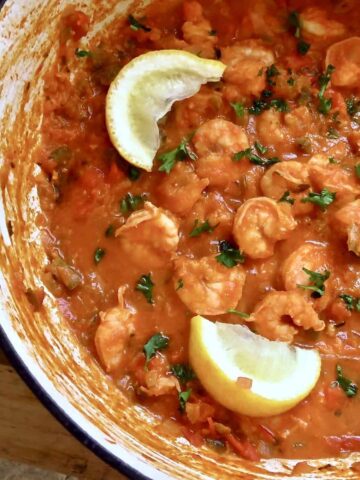
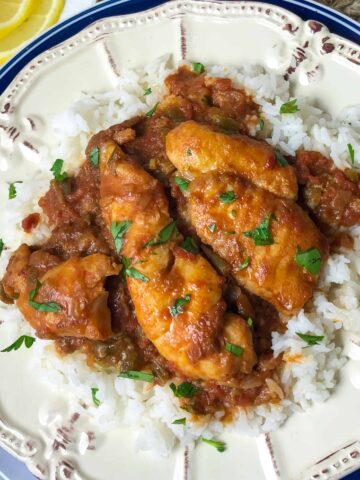
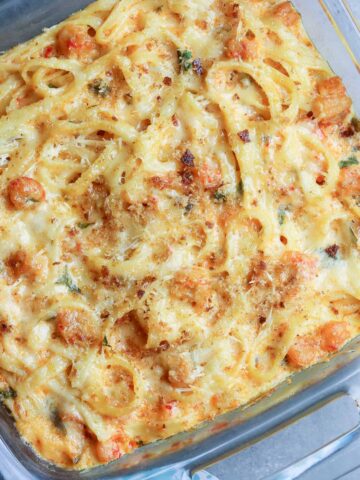

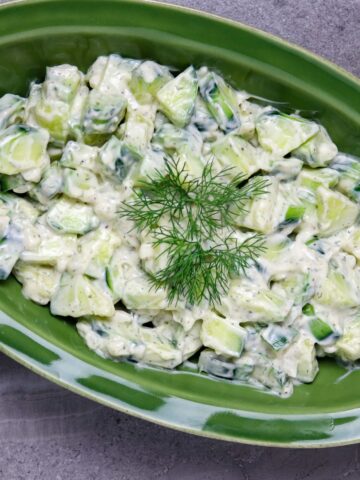
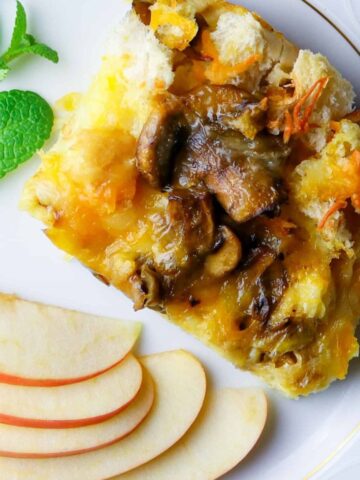
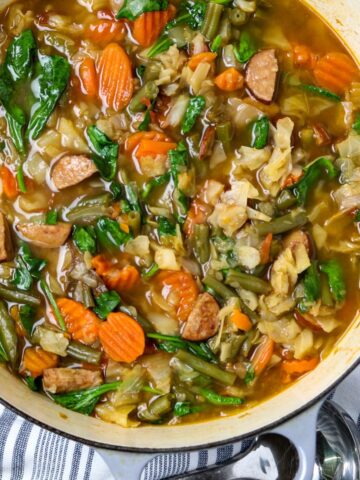
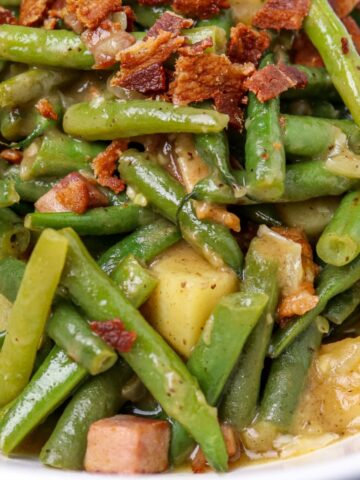
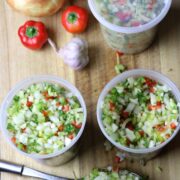
Comments
No Comments